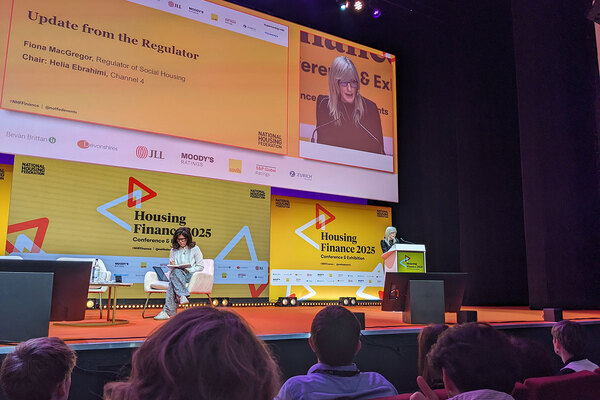Is it RIP for ESG?
Michael Nutman, senior associate at Anthony Collins Solicitors, explores the traction ESG has with investors and whether it may well be ‘rest in peace’ for the S and G in the metrics for social housing
For anyone operating in or around the social housing sector in the past decade, it would have been difficult to miss the notion of environmental, social and governance (ESG). It has, for many years, been an acronym intrinsically linked to private finance and investment in the sector and beyond.
Two years ago, we commented that ESG considerations were in the DNA of social housing providers. We reported on the lengths to which many were going to ‘tell a good ESG story’ and prove to investors and funders that such considerations were central to their day-to-day activities.
So where are we two years on? Does ESG still have traction with investors and funders?
Day-to-day relevance
The Sustainability Reporting Standard (SRS) was launched in 2020. It provides a framework for consistent, comparable and transparent reporting on ESG performance by social housing providers.
Since its inception, the standard has been adopted by more than 100 social housing providers. In addition to the SRS, the Loan Market Association (LMA) continues to revisit and revamp its tools, templates and guidance on ESG objectives in private finance and investment.
All positive so far then.
ESG reporting is becoming more standardised and sophisticated, investors/funders continue to request data within the parameters of ESG, and the LMA continues to champion the role of ESG in private finance and investment.
But does ESG still dictate funder/investor decisions in the social housing sector? And are financial products in the social housing sector still tied to ESG objectives?
Funder/investor buy-in
There was widespread buy-in from investors and funders to the notion of ESG at its inception. However, there are now suggestions that this is waning, and there are reports of a growing anti-ESG sentiment in the US, fuelled, as one might suspect, by the recent change in administration.
The initial sales pitch to investors and funders that ESG equalled ‘goodness’ was only going to hold sway for so long. The alternative sales pitch that ESG was an instrument for delivering higher returns with lower risk was flawed.
An ESG focus (in and of itself) will rarely improve the profitability of an organisation. Funders and investors have also raised concerns that the notion of ESG is too broad and aims to cater to too many interests on too many fronts. As Aswath Damodaran, professor of finance at the Stern School of Business at New York University, opined in the Financial Times: “The truth is that ESG scores today measure everything [and] consequently — consequently, they measure nothing.”
There is also commentary to suggest that the G element of ESG (governance) is, at worst, redundant and, at best, sidelined by the ever-increasing importance of E (environmental) and, to a lesser extent, S (social) objectives.
The G in ESG looks to capture factors like corporate structure, board composition and business ethics, but it remains challenging to construct meaningful metrics for this limb of ESG.
Furthermore, while G arguably forms the bedrock on which E and S objectives can be achieved, commentators question how helpful it is to suggest that executive teams are accountable to all stakeholders rather than simply accountable to shareholders or board members. This potentially makes them accountable to none of them.
Funder/investor products
ESG remains an important term in the lexicon of social housing finance.
It is a helpful (inclusive) umbrella under which social housing providers can report their efforts towards greater sustainability, and under which investors/funders can communicate their sustainability requirements. A good ESG story, then, remains crucial for funder/investor engagement.
However, the rise of generalist sustainability-linked loans, the growing appetite among social housing providers for green loans, and the advent of retrofit-focused funding products suggest that ESG is no longer the hook on which sustainability in the social housing sector hangs.
As social housing providers need to make increasingly tough decisions on where their funds are to be directed, and if the E of ESG is often going to take priority in those decisions (as seems to be the case), it is likely that the S and G of ESG are going to be sidelined.
ESG is too ingrained in the social housing lexicon to fall away entirely, but with net-zero targets in mind, it may well be RIP for S and G in the short to medium term.
Michael Nutman, senior associate, Anthony Collins Solicitors
Sign up for Social Housing’s comment newsletter
New to Social Housing? Click here to register and sign up to our comment newsletter
The comment newsletter brings you a fortnightly selection of specialist opinion, guidance, and political and economic commentary, from a unique range of leading experts.
Already have an account? Click here to manage your newsletters.
RELATED









